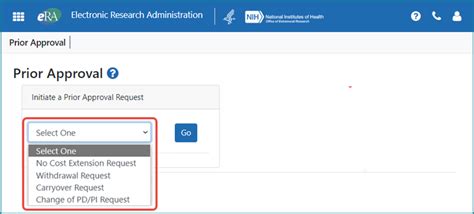Nih Second No Cost Extension: Avoid Funding Gaps

The National Institutes of Health (NIH) provides a crucial source of funding for research projects in the United States. One of the key challenges faced by researchers is managing their grant funding to ensure continuity and avoid gaps in their research projects. To address this issue, the NIH offers a mechanism called the "No Cost Extension" (NCE), which allows grantees to extend their project period without additional funding. In this article, we will delve into the specifics of the second no-cost extension and provide guidance on how to avoid funding gaps.
Understanding No Cost Extensions

A No Cost Extension is a provision that enables grantees to extend their project period beyond the original expiration date without receiving additional funds. This mechanism is particularly useful when a project is nearing completion, but the researcher needs more time to finalize their work. The NIH allows for up to two no-cost extensions, each for a period of 12 months, provided that the grantee has not exhausted their funds and the project is still active.
Eligibility Criteria for No Cost Extensions
To be eligible for a no-cost extension, the grantee must meet certain criteria. These include having an active grant with a valid project period, not having exhausted the available funds, and having a justified need for an extension. Additionally, the grantee must submit a request for the no-cost extension at least 30 days prior to the expiration date of the grant. The request should include a detailed justification for the extension, a revised project timeline, and a budget that reflects the continued use of existing funds.
| Extension Type | Duration | Eligibility Criteria |
|---|---|---|
| First No Cost Extension | 12 months | Active grant, unused funds, justified need |
| Second No Cost Extension | 12 months | Active grant, unused funds, justified need, prior approval for first extension |

Strategies for Avoiding Funding Gaps

Avoiding funding gaps is crucial to maintaining continuity in research projects. Several strategies can help mitigate this risk, including careful budget planning, timely submission of progress reports, and proactive communication with the NIH. Grantees should also explore alternative funding sources, such as supplementary grants or collaborative agreements, to supplement their existing funds. Furthermore, developing a contingency plan that outlines potential funding scenarios and corresponding research adjustments can help researchers adapt to changing funding landscapes.
Best Practices for Managing Grant Funds
Effective management of grant funds is critical to avoiding funding gaps. Best practices include maintaining accurate and detailed financial records, regularly reviewing budget statements, and ensuring that expenditures are aligned with the approved budget and research plan. Grantees should also establish a system for tracking and reporting expenses, as well as a process for addressing any discrepancies or issues that may arise during the project period.
Additionally, researchers should prioritize their research objectives and focus on the most critical aspects of their project. This may involve adjusting their research scope, renegotiating with collaborators, or identifying opportunities for cost savings. By taking a proactive and flexible approach to grant management, researchers can minimize the risk of funding gaps and ensure the successful completion of their projects.
What is the purpose of a No Cost Extension?
+A No Cost Extension allows grantees to extend their project period without receiving additional funds, enabling them to complete their research project without interruption.
How many No Cost Extensions can a grantee receive?
+The NIH allows for up to two No Cost Extensions, each for a period of 12 months, provided that the grantee meets the eligibility criteria and has not exhausted their funds.
What are the key strategies for avoiding funding gaps?
+Key strategies for avoiding funding gaps include careful budget planning, timely submission of progress reports, proactive communication with the NIH, exploring alternative funding sources, and developing a contingency plan.



